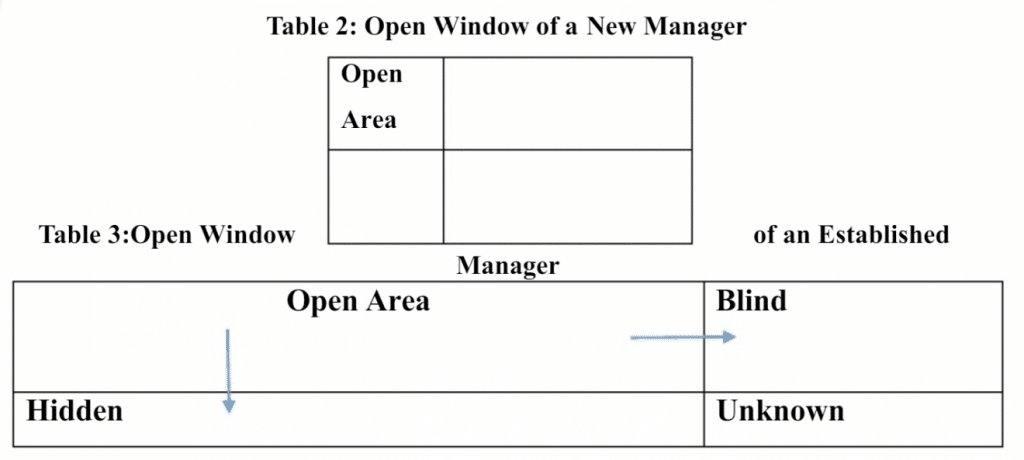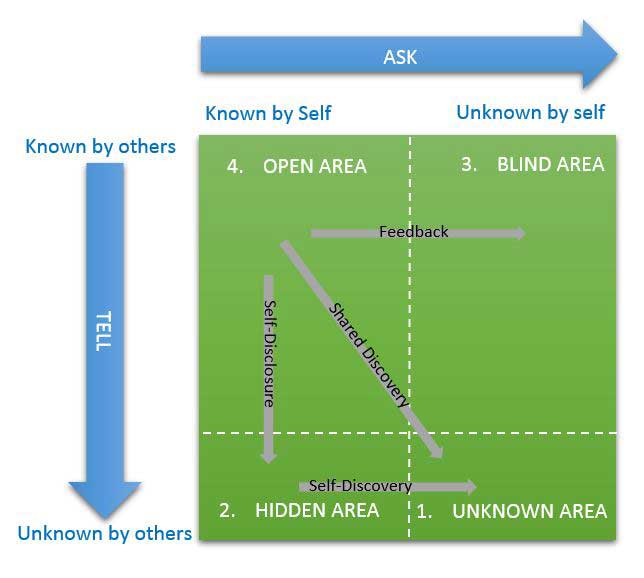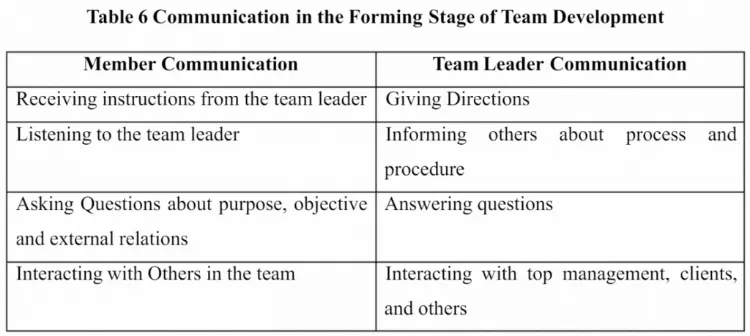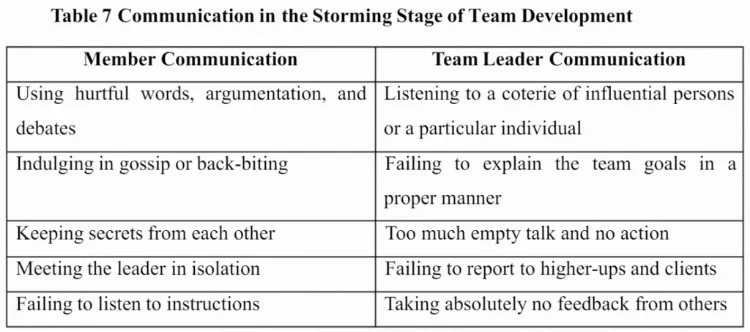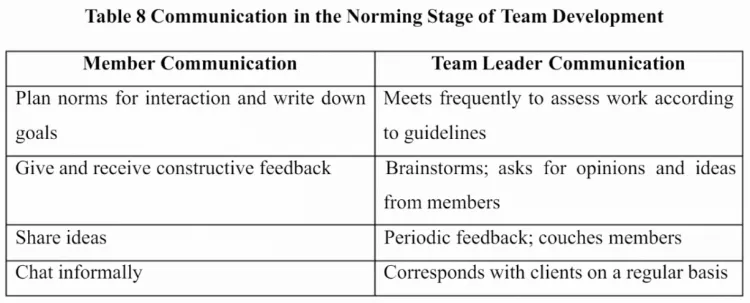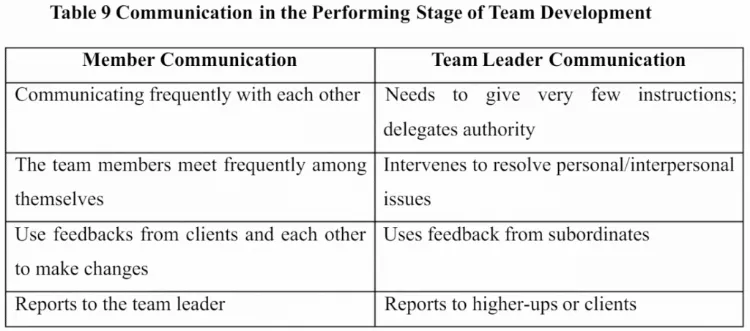Communication is the glue that holds people and organisations together. It is the key to success for any successful organization and individuals, especially in these digital times.
Effective communication has become one of the most important parameters to define organizational effectiveness.
Organizations are built around people and an environment of mutual understanding where trust fosters good inter-personal relationships and can be linked to improved productivity for organizations and enhanced performance for individuals.
In this regard, the communication model put forward by Joseph Luft and Harrington Ingham, ‘Johari Window’, is a revolutionary theory which provides useful insights for improving interpersonal communication through self-awareness and understanding.
This interpersonal communication model, if appropriately applied, not only sensitizes leaders to the importance of soft skills but also helps them build an environment of creativity and collaborative learning.
Thus, this conceptual article has been undertaken to study the application of the Johari Window model in improving interpersonal communication within organizations.
The study also throws light on the link between interpersonal relationships and managerial effectiveness.
Further, this study also brings forth the close connection between group dynamics and interpersonal relations.
In this era of digitalization, where individuals and organizations are struggling to cope with the nuances of the virtual world, a detailed study and application of the Johari Window exercise can revitalize and sensationalise the way organizations and individuals communicate.

Introduction
The term interpersonal can be defined as between persons or involving personal relationships.
Though interpersonal communication includes oral, written, and non- verbal forms of communication, the term is generally applied to spoken dialogue that occurs between two individuals or groups at a personal level.
It can be synchronous (for example, face to face) or asynchronous (for example instant messaging, email and so on). As interpersonal semantics are concerned with “verbal exchanges” between people.
In communication, we explore relational development through the process of interpersonal semantics that people use when they engage with each other.
Central to the concept of interpersonal semantics is ‘Johari Window’.
This communication model was developed by American psychologists, Joseph Luft and Harry Ingham in the 1950s, and named as ‘Jo-Hari’ by combining their first names, viz. Joseph and Harry.
The model is an amalgamation of many unique qualities with reference to its relevance, emphasis, influence, soft skills, behaviour, empathy, cooperation, intergroup development and interpersonal development.
The Johari Window is a simple and useful tool for self-awareness training, personality development, interpersonal communication, team development, group dynamics and intergroup relations. It is also known as the disclosure/feedback model of self-awareness.
This particular tool provides us with the opportunity to look into how we view ourselves and how others view us. It acts as a model of opening up the different lines of communication with others.
The Johari Window theory renders a way to show how we become increasingly more open to others as we get to know them and share information about ourselves.
The rationale behind the Johari Window process is that people have the innate ability to adopt four approaches to interpersonal relationships with respect to themselves:
- Ability to disclose a lot of information about themselves
- Ability to disclose any information about themselves
- Ability to receive feedback in a constructive way
- Ability to resist any feedback about themselves
The Johari Window addresses the following questions:
- What do others know about the individuals?
- What is unknown to them?
- What do others not know about the individual that they should know?
- What do they know about the individual that the individual should know?

Table 1 illustrates the diagrammatic representation of the Johari Window process;
Perspectives of Johari Window
It represents a persons (or groups) attitude, beliefs, skills and experiences in relation to others from essentially four perspectives called windows or quadrants.
The four perspectives of this window can be referred to as ‘regions’ or ‘areas’ or ‘quadrants’.
Each area contains the information and represents feelings, and motivation in terms of whether the information is known or unknown to the person and whether the information is known or unknown to others in the team.
The four panes of the window represent the following:
Open Area:
This phase is basically of our conscious self that includes our behaviour, attitudes, motivation, values, and ways of life which we are aware of and which is known to others.
The first pane, by name Arena, contains information that one knows about one’s own self and about which the group knows.
This is characterized by free and open exchange of information between person’s own-self and others.
The behaviour here generally is public and available to everyone.
The Arena increases in size as the level of trust increases between individuals or between the individual and their group, and more information, particularly personally relevant information is shared.
Hidden Area:
This area is something that is not known to others unless we disclose it.
This is an inhibition factor or fear factor which stops a person from being open.
This pane is also called as “Façade” or “Hidden Area.”
This information can be kept if one does not see the supportive elements in the group.
It is believed that if one starts revealing thoughts, feelings, and reactions, group members might judge negatively and may react in an inappropriate way.
At the same time, if the risk of disclosure is not taken, the opportunity to learn could dissipate.
Blind Area:
This particular phase deals with things about ourselves which we do not know, but that others can notice with profound clarity.
We assume things to be true of ourselves for various reasons but that others can perceive it in a different way.
This information may be in the form of mannerism, verbal cues, the way we say things, the style in which we compare ourselves to others.
Unknown Area:
This phase, we observe some ignorance of the prevailing traits that are known by neither subjects nor their peers as they remain in the unknown quadrant.
This represents the ignorance of recognition of participant’s behaviours or motives by all participants.
The reason attributed to this may be because of collective ignorance of the existing traits.
Here our potential is unknown to us and to others.
This area represents an unknown area that includes early childhood memories, latent potentialities, intrapersonal dynamics, and unrecognised resources.
Since there is a possibility that the internal boundaries can move forward and backwards or up and down as a consequence of soliciting or giving feedback, it would be possible to have a window in which there would not be an unknown area.
Johari Region I is also known as open area/open self/free area/free self/the arena. This area subjects to what is known to the person about himself/herself and also known by others.
This region is also known as the ‘area of free activity’.
This renders the information about the person’s behaviour, attitude, feelings, emotions, knowledge, experience, skills, views etc. which are known by the person and known by the others.
The main aim in all groups should always be to develop the open area of every person as it produces effectiveness when we work in this area with others.
The arena can be best perceived as the space where good communications and cooperation occur that is free from distractions, distrust, confusion, conflict and misunderstanding.
Teachers have a huge responsibility to promote a culture and expectation for open, honest, helpful, constructive, affirmative, open communications, and the sharing of knowledge throughout their organization.
People learn and work with one another over time and reveal things about themselves directly or indirectly.
In order to become a part of the team, there is an utter urgency for us to be open and communicate.
We need to be open to know how other people view us. The same thing is applicable even at home with family and friends.
Johari Region II is what is known about a person by others in the group, but is unknown by the person himself/herself.
The main objective is to reduce this area in order to increase the open field, which paves the way to attain self-awareness for this blind area because it is considered an ineffective and unproductive space for individuals or groups. This is an area of ignorance about oneself.
Leaders should promote an environment that creates non-judgemental feedback, and group response to individual disclosure, which results in reducing fear and encourages both processes to run smoothly.
This is an attempt to make participants lose their inhibition. Special attention is essential to avoid the emotional upset of the candidates.
Johari Region III, also regarded as a hidden area/hidden self/avoided area/avoided self or façade. There are some hidden qualities which are known to the person and unknown to others.
This particular region is considered as hidden. This hidden or avoided self represents feelings, information, and interests.
This area mainly revolves around hidden agendas, manipulative intentions, fears, inhibitions, and secrets, to name a few.
The motive of this is to move the candidate into the open area through the process of ‘disclosure’ by exposing relevant information and feelings, hence the terminology as ‘self-disclosure’ and ‘exposure process’.
By reducing the hidden area, we can increase the open area and reap positive benefits like good cooperation, understanding, trust, reliability, healthy teamwork, and efficacy.
This acts as a catalyst in reducing the potential for poor behaviours, misunderstanding, confusion, poor communication, ignorance, inefficiency, fear of judgement or susceptibility and expands the horizon by enhancing mutual understanding which enables an efficacious individual and group performance.
Johari Region IV consists of information, hidden abilities, feelings, aptitudes, experiences, and so on that are not known to the person himself/herself and unknown to others in the group as well.
These unknown issues include capabilities, feelings, attitudes, aptitudes, which can be positive and useful, or they can be of profound depth in analysing the deeper aspects of a person’s personality, influencing his/her behaviour to various degrees.
This area is more prevalent in younger people and people who lack sportive spirit and confidence.
Teachers, managers and leaders should help participants by creating an environment that instils a spirit of self-discovery to promote the process of constructive observation and feedback among team members.
This benefits people to fulfil and achieve desirable results.
Objectives of the Study
This conceptual study has been undertaken, keeping in mind the following objectives:
i. To study the application of Johari Window in improving interpersonal communication;
ii. To examine the link between interpersonal communication and managerial effectiveness;
iii. To explore and examine the connection between group dynamics and interpersonal communication in an organization.
Research Methodology
This conceptual study is carried out by studying the published research papers of two pioneers of communication theory Joseph Luft and Harry Inhagam.
Other research papers and web articles related to the application of Johari Window have also been used as references for the purpose of conducting the study.
Findings
Johari Window: As a Tool for Improving Interpersonal Relationships
The aim of management is to develop the open area of an individual or a team because an open-minded individual or team is receptive to new ideas.
Such individuals can work well with others and are free from mistrust, confusion, conflict and misunderstanding. They also have a responsibility to promote a culture of openness and transparency.
Table 2 shows the open window of a new manager, while Table 3 illustrates the open window of an established manager.
Established individuals have a larger open area than new members. This is because established individuals have more experience and knowledge compared to newcomers.
The open area can be developed horizontally by offering feedback to the new members. It can also be designed vertically when new members share information about themselves.
The Blindspot, as shown in Table 4, is what is known about a person by others but is not known by the person himself or herself.
The goal is to reduce this area by soliciting feedback about oneself.
As this area decreases, the open area automatically increases.
The facade has been exhibited in Table 5 and is the area where individuals keep certain traits or behaviours to themselves without disclosing it to others.
Generally, extracting this information is not an easy process, as the extent of disclosure is dependent on the discretion of the individual.
An open organizational climate promoted by the manager has a significant impact on disclosures of such kind.
A self-aware individual with a mature mindset is less likely to hold back organization-specific information in an open environment.
The unknown area indicates feelings, aptitudes and latent abilities that are unknown to the person as well as to the group.
The leader or manager can prompt the person to discover this ability.
Managers can help employees deal with inhibitions and fears by giving feedback and suggestions.
Link Between Effective Managers and Interpersonal Relationships
As per a study conducted by Fred Luthans & Associates, ‘Successful Vs Effective Managers, Academy of Management Executive’ (1988), the most significant relative contribution to real manager effectiveness comes from the human-oriented activities – communication and human, and resource management.
The importance they give and the effort they devote to the human-oriented activities of communicating and human resource management is far more than the successful managers.
How human resources are managed – keeping them informed, communicating with them, paying attention to them, reinforcing them, resolving their conflicts, training/developing them – all contribute directly to managerial effectiveness.
Thus, indirectly, highly effective managers do not have vast unknowns, as shown in Figure 1 but have a large open arena. They are comfortable communicating with their peers and employees.
Active managers and their key employees always strive to open their free areas and reduce their blind, hidden and unknown areas.
A significant area that impacts productivity and organizational effectiveness is managerial communication style.
Dr Jay Hall of Teleometrics has identified four models of managerial behaviour and correlated them to styles that managers with compelling communication exhibit.
Hall has identified four styles of the developer, the manipulator, the taskmaster and the regulator.
The last three contain within them the styles that do not lead to open communication and mutual understanding.
Hall identifies the Developers as the most effective managers.
Developers have strong self-awareness and self-confidence along with a deep understanding of their emotions, strengths, limitations, values and motives.
They are realistic and honest with themselves and others.
They have large open areas because they are open about their feelings and regularly look for feedback.
Through building a culture of openness and sharing, they attract and retain high performing employees committed to their job and organization.
Diagram of the Johari Window method
Implications of the Johari Window model and Team Development
In teams and working groups, a goal should be the development and expansion of the ‘open area’ for every person, because when this area is expanded, people are most practical and productive, and, consequently, so are teams and working groups.
The Open/ Free Area, minimizes distortions and mistrust by providing opportunities for dialogue on topics that are openly acknowledged as important.
The size of the Open/Free area is a developmental outcome of working relationships.
People with established working relationships will have larger areas, and those who are new will have smaller areas.
The Open/Free area is usually expanded by encroaching into the Blind and Hidden areas.
That means that the enlargement of the Open/Free quadrant comes from telling what is hidden and asking about the blind spots.
Often, this comes through the natural process of developing work experiences, but can also be accelerated by actively engaging in personal feedback processes.
Not all personal information is grist for the mill in the Open/Free areas.
Personal boundaries are to be respected, and there need to be healthy group norms describing the type and depth of information that best contributes to effective working relationships.
The Blind Area often holds the keys to personal and team progress.
When strengths and areas for development are shared in this quadrant, the recipient is better able to make decisions on behaviour changes and seek support or resources for personal growth.
The blind spots identified in this area can range from technical competence to attitudinal issues.
Regardless of the type of information shared here, it needs to be data that will help the recipient become a better person and a more productive employee.
As discussed above, when information is shared from The Blind quadrant, it automatically expands the Open/ Free area.
The Hidden Area is where we keep personal information that we do not want others to have access to.
The reasons for keeping information hidden can range from being personally sensitive, that one would not want to share openly, to information that an employee would like to share, but does not feel there is adequate trust or safety to do so.
In either of these situations, exposing information in this quadrant can have negative repercussions.
However, if the organizational climate is founded on trust and respect, then sharing relevant information helps both the individual and the team.
The Unknown Area is where our highest potential resides.
People are sophisticated, and there is much under the surface in the unconscious mind.
In the course of living, events can occur where feelings, thoughts, or insights are realized that were never recognized before.
These are instances where the Unknown Area reveals clues to an inner life that had previously gone unnoticed.
When these clues emerge, enter them into your Window and explore their potential meanings. Tuckman’s “Forming-Storming-Norming-Performing Model of Team Development” (1965) has been used to link group dynamics with interpersonal communication that takes place among members of a group and between two groups.
Forming is the first stage of team development.
This stage is characterised by a high level of dependence on the leader for guidance and direction (Table 6).
Storming is the second stage of team development.
This stage is characterised by competition and strife among the team members, communication thus, plays an important role in idea development, articulation of team goal sand facilitating productive interaction (Table 7).
Norming is the third stage of team development.
This stage is characterised by generating agreement and creating consensus.
Communication is vital for agenda-setting and creating norms – written as well as unwritten – for interaction. (Table 8).
Performing is the fourth stage of team development.
This stage is characterised by a fully functioning team.
Communication is geared towards updating each other on team progress and reporting. (Table 9).
Conclusion
It is widely recognized that the present-day world requires professionals who are not only qualified and competent but who also possess certain personal qualities on which depend how effectively they work in an organization as individuals and in groups.
The Johari Window tool serves the purpose of prompting the participants to learn with ease in the classroom to meet the expectations prevalent in the industry.
Johari Window, with its emphasis on feedback and disclosure, adequately explains interpersonal semantics and its role in communication with oneself and others.

About the Author:
Dr Parul Saxena is Head of the HR & OB Department at the School of Business Studies of Sharda University in India.

References:
Clendenin Dennard. (1999). NCORE Conference Workshop, Memphis Tennessee https://library.wisc.edu/.
Colin P. Hales, “What Do Managers Do? A Critical Review of the Evidence,” Journal of Management Studies, 1986, 23, pp. 88-115.
Luft J. and Ingham H. (1955). The Johari Window: a graphic model for interpersonal relations, University of California Western Training Lab.
Luft J and Ingham H’s Johari Window concept. (2001-4) https://encompass.eku.edu/
Luthans Fred, Successful Vs Real Effective Managers, Academy of Management Executive, 1988, 2(2): 127-132, University of Nebraska, Lincoln.
Northup Tom, Effective communication: A necessity for a Successful Organization,2006.
Rajeshwari K V, Enhancement of Soft skills through JOHARI WINDOW, Scholarly Research Journal for Interdisciplinary Studies, ISSN 2278-8808.
Stephen J. Carroll and Dennis J. Gillen, “Are the Classical Management Functions Useful in Describing Managerial Work?” Academy of Management Review, 1987,12, pp. 38-51.











